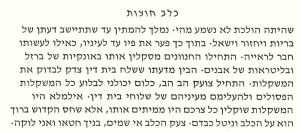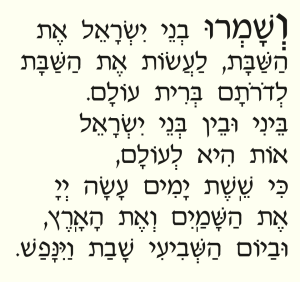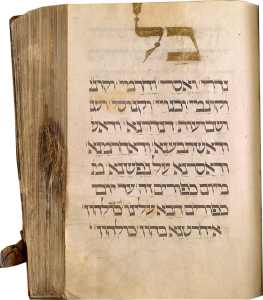In September of 2014 a children’s book was published called “The Book with No Pictures.” At first glance, the book probably should have been a flop, but it certainly wasn’t. From the time that publishers could mass produce books with artwork, there probably hasn’t been a book for young children on the market that hasn’t had some kind of pictures. Walk into a children’s bookstore today and it is hard to find anything that in addition to colorful artwork, does not feature some accompanying CD, sound effect buttons, pop-ups, textures, toys, celebrity characters, or other gimmicks to help entice children to engage with books and their families to purchase them. But this book, in addition to having no pictures or characters whatsoever, has no story line and is simply a bunch of hilarious nonsense words and phrases for the reader to say: words like “Blork,” “Bluuurf,” and “Glibbity Globbity.” So how could it have been possible for a silly children’s book of this kind to become a New York Times #1 bestseller?
A video was circulated on the internet featuring the author of the book, B.J. Novak, an actor and stand-up comedian, reading his book to a group of children. The video featured their hilarious reactions to his reading, thereby proving that a children’s book does not need any pictures at all to be successful. The video went viral, garnering millions of views and the book became an instant bestseller. So what was the key to B.J. Novak’s remarkable success? Was it a clever viral marketing campaign? That surely didn’t hurt. Was it B.J. Novak’s celebrity status? I don’t think so. Was it the content? Probably not. Or could it have been because the book was developed to highlight the relationship between the reader of the book and the audience, and the storytelling, rather than placing too much emphasis upon the contents of the book? Now we could be on to something.
The CCAR’s new High Holy Day machzor, Mishkan HaNefesh, took countless hours of time, thought, and resources to develop. The process involved many of our leading rabbinical minds, cantorial voices, and lay leaders collaborating over the course of many years. Because of this, many of us believe that these books have the capacity to shape an entire era of worship and religious thought, so it is particularly important what content is ultimately included in the book. And yet for the large percentage of Jews that only attends a Reform worship service once or twice upon the High Holidays, regardless of what language is used, what commentary is offered, or how the fonts or paginations appear, the prayers on the page may often seem nearly as foreign and nonsensical to the average Jew as the words in B.J. Novak’s book. This is similar to the idea in Dr. Ron Wolfson’s premise of Relational Judaism, where he argues that instead of investing in programming, congregations should strive to invest in building lasting relationships with congregants. We now have an opportunity to highlight the relationship between the readers of the machzor and their congregations. Now that Mishkan HaNefesh is published, we can focus more upon the relationships that are forged between congregants, clergy, and liturgy through the telling of the story.
Just as we publish new prayer books with new language to relate to each generation of worshippers, so too is music for worship continually evolving. This is why the making of new music for Mishkan HaNefesh is so important and why Shirei Mishkan HaNefesh, the musical companion to Mishkan HaNefesh, is such a timely publication. Shirei Mishkan HaNefesh is a compilation of High Holy Day music assembled by the American Conference of Cantors from a wide variety of styles and sources that allows for contemporary Jewish composers to give voice to liturgy from our new machzor in innovative, rich, and meaningful ways. The book includes twenty-five exciting new musical settings of liturgy for Mishkan HaNefesh from the Reform movement’s greatest musical artists, including many accomplished cantors and singer-songwriters.
Even Avinu Malkeinu by Max Janowski was met with skepticism and resistance by discerning musical directors of congregations during Janowski’s generation who preferred a more sophisticated musical approach. Yet hardly anyone today could imagine his beautiful and timeless melody being controversial at all. Some of today’s musical innovators have the potential to become standard repertoire for congregations across all movements, but the music needs to be published, shared, and experienced at congregations in order to stand the test of time. Shirei Mishkan HaNefesh offers congregations the opportunity to give new voices a chance to make their way into the lexicon of High Holiday worship. We have read many of the same prayers again and again for generations. Today we have the opportunity to try to retell the same story, only with new voices.
The Torah provides thirteen chapters of vivid detail on the physical description and construction of the Mishkan, and yet there is no account of the kind of music that might have accompanied its sacred rites – not until the Mishnah was published many generations later. We can only imagine what the worship might have sounded like. The Torah, like all ancient oral traditions, was passed down musically, and yet we did not bother to write down the musical patterns until centuries afterwards when cantillation systems were eventually codified and notated. The Torah is our most sacred book, but like Mishkan HaNefesh, it is a book with no music.
This image reminds me of when I met the head of the cantorial school at Hebrew Union College for the first time. On his ornate music stand in his office I found a very distinguished-looking book titled, “All I Know About Cantoring – By Cantor Israel Goldstein.” I opened the book and laughed out loud when I discovered that every single page of it was blank – a gag gift given to him by a friend. It was hilarious and memorable gift, but upon reflection, music can function a bit like that – it can be the sounds that can fill the pages of a blank book, the midrashic stories that can fill in the gaps between the story lines of Torah, or the images that can be evoked in the minds of children who hear a book read to them that has no pictures.
With the publication of Shirei Mishkan HaNefesh, the American Conference of Cantors tries to help us hear how we can retell our same age-old story in new and engaging ways. Not all books need to have pictures or music in them, but many congregations may wish to use this beautiful book as another useful tool for forging relationships between congregants, clergy, and liturgy for this generation and generations to come.
———
Cantor Dan Singer is the Senior Cantor at Stephen Wise Free Synagogue in Manhattan.






















